| 24: Front Bands &
Necks on Cardigans & Jackets The
neck band of a cardigan or jacket is different to that of a
sweater because it joins to the centre front band at each end. This
means that you have to make some sort of a corner.
As well making a well defined corner shape, there is often a
buttonhole as well, and this has to be fitted in without causing any
distortion whilst also being in a functional position. If the
buttonhole is too low, the edge of the band will hang down over the
buttonhole or will gape open.
As with neck bands, front bands are in the spotlight and any error
will be glaringly obvious. If the stitches are picked up
haphazardly, making the bands look a bit crooked, you will find that
you have spoiled all the good work you have done so far.
There are several ways to work the front bands. The centre edge can
be knitted as part of the front, usually in a stitch that will not
curl back or inwards, such as garter stitch or a rib. Front bands
can be added by picking up stitches along each side of the front
opening and then knitting some rows in a chosen pattern stitch, or a
separate band can be knitted and joined to the garment.
A band knitted as part of the front is always exactly the right
length as the band is an extension, so it will not hang down or be
too short. It just has to be worked in a stitch that has a firm
edge, and is also strong enough to support any buttons and stay in
place without curling.
When a band is worked by picking up stitches along the front edge,
there are problems that can spoil the look of the garment. Fluted or
wavy bands mean that too many stitches have been picked up along the
edge, and the band is longer than the front of the cardigan or
jacket. The ends are too long, and hang below the edge of the
garment [pic 1,2].
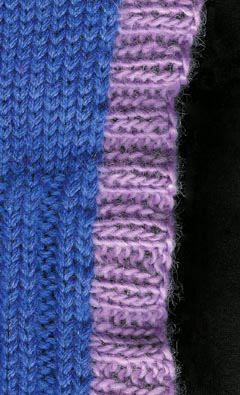
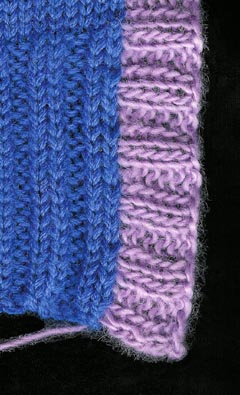
1: (left) One stitch has been picked up for every
row along the front edge, which has become very loose and wavy
because there are too many stitches for the length.
2: (right) The end hangs down below the hem
edge.
A front band that has too few stitches or
rows means that the band is shorter than the length of the front of
the garment. This will make the band bow in and the hem will be
pulled up at the end [pic 3,4,5].
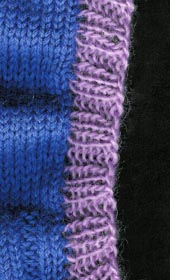
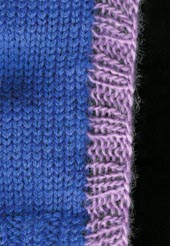
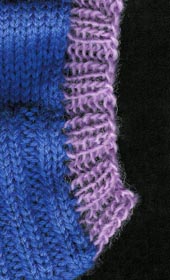
3: (left) Too few stitches bow the
edges in.
4: (middle) Savage pressing hasnít solved the problem.
5: (right) The hem band is pulled up.
Always make sure that you have picked up the
same number of stitches on each side when you are knitting bands.
NEXT PAGE >>
chapter page: 1 | 2 |
3 | 4 |
5 | 6
|